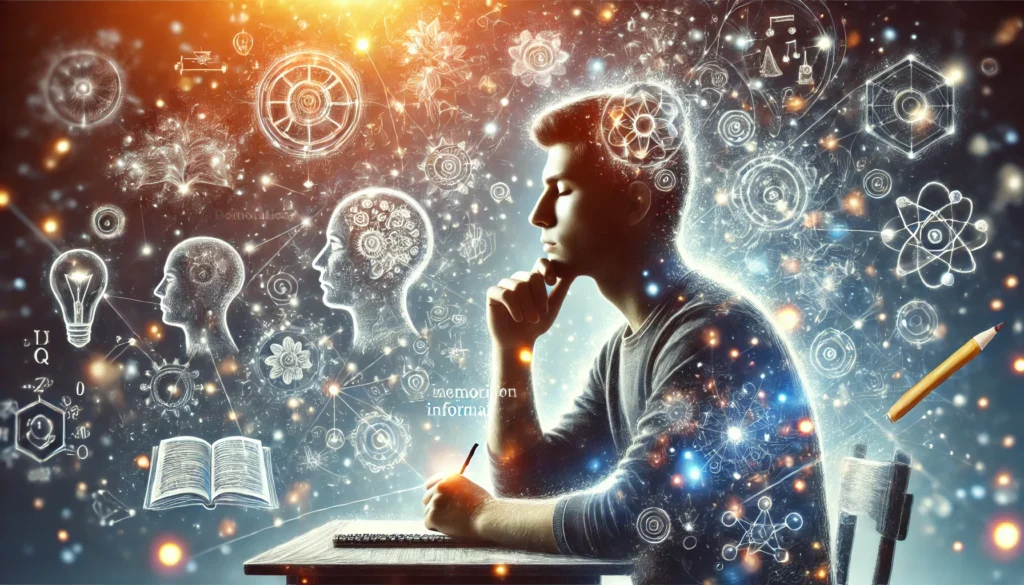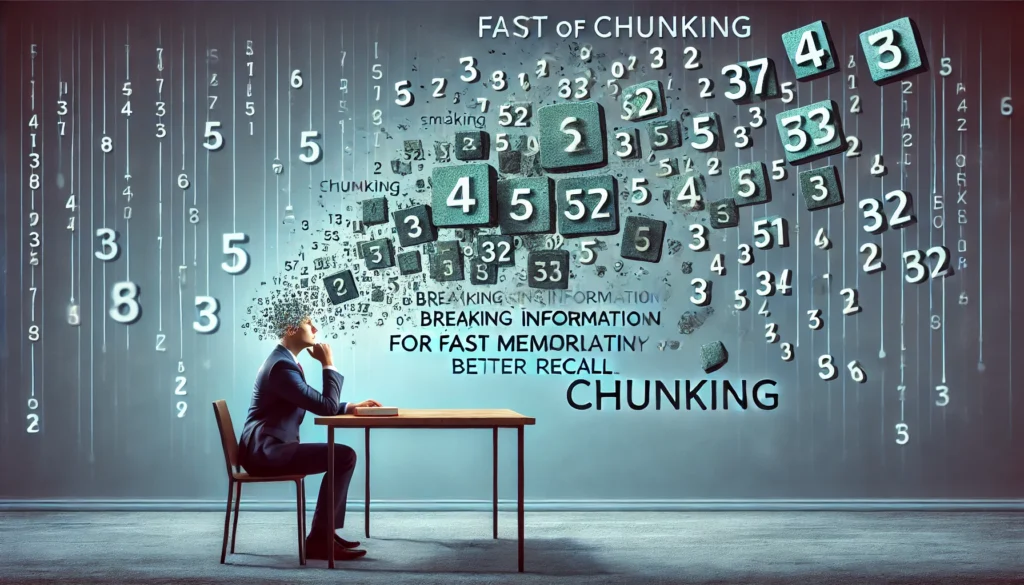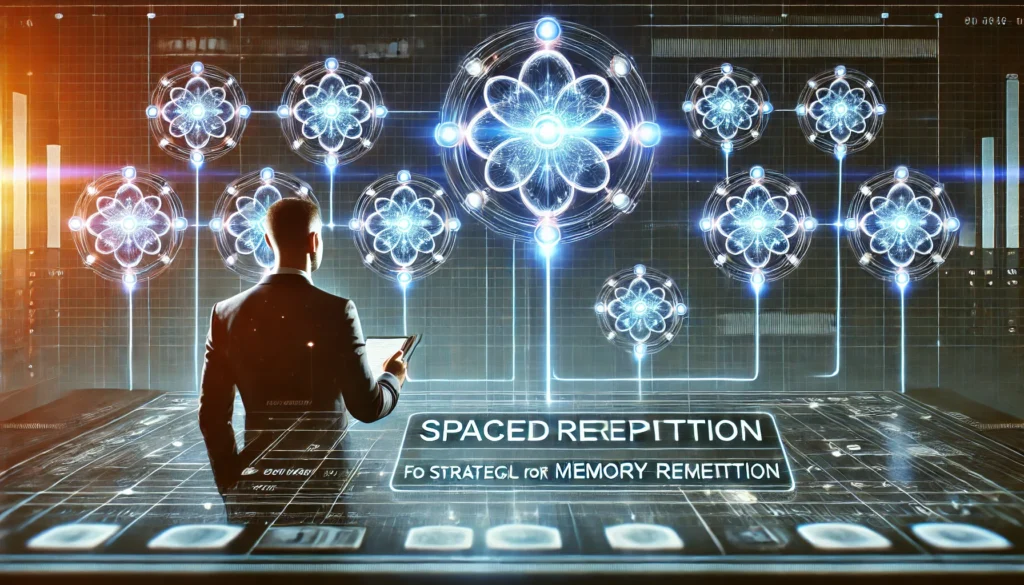This article delves into a variety of techniques that can help you memorize information faster, offering a blend of scientific insights and practical advice. From understanding the cognitive processes involved in memory retention to exploring modern mnemonic devices, we aim to equip you with the tools necessary to optimize your mental performance.
You may also like: Memory Techniques for Better Studying
Understanding Memory: The Basics
Memory is a complex cognitive process that involves encoding, storing, and retrieving information. To effectively enhance your memory, it’s crucial to understand the basics of how memory works. Our brain processes information through sensory memory, short-term memory, and long-term memory. Sensory memory captures fleeting impressions of sensory information, while short-term memory holds information temporarily for analysis. Long-term memory, on the other hand, is where information is stored for later retrieval.
Sensory Memory: The Initial Stage
Sensory memory is the initial stage of memory that involves the brief retention of sensory information. It acts as a buffer for stimuli received through the senses, preserving it long enough for the brain to decide what to focus on. This type of memory is fleeting, lasting only a few seconds, but it’s crucial for filtering out irrelevant data. Understanding sensory memory helps in optimizing the information that progresses to short-term memory.
Short-term Memory: Holding Information Temporarily
Short-term memory serves as a workspace where information is temporarily held for processing. It can store a limited amount of information, typically around 7±2 items, for a short duration. This memory type is critical for everyday tasks, like remembering a phone number long enough to dial it. Techniques that enhance short-term memory, such as rehearsal and chunking, can significantly improve your ability to process and store information for longer periods.
Long-term Memory: Storing Information for Later Retrieval
Long-term memory is responsible for storing information for extended periods, ranging from minutes to a lifetime. This memory type is divided into explicit and implicit memory, each serving different functions. Explicit memory involves conscious recollection of facts and experiences, while implicit memory is unconscious and involves skills and conditioned responses. Strategies for enhancing long-term memory include meaningful encoding, retrieval practice, and the use of mnemonic devices.
The Science Behind Memory Retention
Memory retention involves biochemical changes in the brain. When you learn something new, your brain forms new neural connections, strengthening the synapses between neurons. This process, known as synaptic plasticity, is crucial for memory consolidation. The more you practice retrieving information, the stronger these connections become, facilitating easier recall.
Synaptic Plasticity: Strengthening Neural Connections
Synaptic plasticity is the brain’s ability to change and adapt as a result of experience. It involves the strengthening of synapses, the junctions between neurons, which enhances communication between them. This adaptability is the foundation of learning and memory. Engaging in activities that challenge the brain, such as puzzles and learning new skills, can promote synaptic plasticity, leading to better memory retention.
Memory Consolidation: From Short-term to Long-term
Memory consolidation is the process by which short-term memories are transformed into long-term ones. This occurs through two main stages: synaptic consolidation, which happens within the first few hours after learning, and systems consolidation, which can take days to years. Sleep plays a vital role in this process, as it helps reorganize and stabilize memory traces in the brain. Prioritizing adequate rest can significantly improve memory consolidation.
The Role of Neurotransmitters in Memory
Neurotransmitters are chemicals in the brain that facilitate communication between neurons, playing a crucial role in memory processes. For example, acetylcholine is essential for learning and memory, while dopamine is linked to motivation and reward-based learning. Understanding the role of neurotransmitters can help in developing strategies to enhance memory, such as engaging in activities that boost these chemicals naturally, like exercise and social interaction.

Techniques to Memorize Information Faster
Chunking: Simplifying Complex Data
Chunking is a technique that involves breaking down complex information into smaller, manageable units or “chunks.” For example, instead of trying to memorize a long string of numbers like 149217761945, you can chunk it into smaller groups like 1492, 1776, 1945. This method leverages the brain’s natural ability to remember patterns and sequences.
How to Effectively Use Chunking
To effectively use chunking, start by identifying the natural groupings within the information. This could be numbers, words, or concepts that can be logically grouped together. Practice by repeating these chunks until they become familiar. Over time, your brain will recognize these patterns automatically, making recall quicker and easier.
Applications of Chunking in Daily Life
Chunking can be applied in various aspects of daily life, from remembering phone numbers to organizing grocery lists. Use it to break down tasks into smaller steps, making them more manageable and less overwhelming. By applying chunking to everyday scenarios, you enhance your ability to process and recall information efficiently.
Chunking in Learning: Enhancing Educational Outcomes
In educational settings, chunking can be a powerful tool for improving comprehension and retention. Teachers can use it to present information in digestible segments, aiding student understanding. Students, in turn, can apply chunking to study sessions, breaking down complex subjects into smaller units for more effective learning.
Visualization: Engaging Your Imagination
Visualization is a powerful tool for enhancing memory. By creating vivid mental images, you can make abstract concepts more concrete and memorable. For instance, if you’re trying to memorize a list of words, imagine a story that connects them. The more detailed and imaginative your visualization, the better your recall will be.
Creating Vivid Mental Images
To create vivid mental images, engage all your senses in the visualization process. Imagine the sounds, smells, and textures associated with the concept you’re trying to remember. The more sensory details you incorporate, the more memorable the image becomes. Practicing this technique regularly can improve both creativity and memory.
Storytelling as a Visualization Technique
Storytelling is an effective way to use visualization for memory enhancement. By weaving information into a narrative, you provide context and meaning, making it easier to recall. This technique is particularly useful for memorizing lists or complex information, as the brain naturally remembers stories more easily than isolated facts.
Visualization in Problem Solving
Visualization can also be a valuable tool in problem-solving, helping you mentally simulate scenarios and outcomes. By visualizing different approaches to a problem, you can assess potential solutions before taking action. This not only aids memory but also enhances critical thinking and decision-making skills.
Mnemonic Devices: Creating Memory Aids
Mnemonic devices are memory aids that facilitate the retention of information. These can be acronyms, rhymes, or associations that make information easier to remember. For example, the acronym “HOMES” helps recall the Great Lakes: Huron, Ontario, Michigan, Erie, and Superior.
Types of Mnemonic Devices
There are various types of mnemonic devices, each serving different purposes. Acronyms involve creating a word from the initial letters of a series of words. Rhymes and songs use rhythm and melody to enhance recall. Visualization mnemonics involve associating images with information. By exploring these types, you can find the one that best suits your learning style.
Crafting Effective Mnemonics
To craft effective mnemonics, ensure they are simple, relevant, and easy to recall. Use familiar language and images that resonate with you personally. The more creative and engaging your mnemonic, the more likely it is to stick in your memory. Practice regularly to reinforce these associations and enhance recall over time.
Mnemonics in Academic and Professional Settings
In both academic and professional settings, mnemonics can be invaluable tools for retaining important information. Students can use them to memorize dates, formulas, and vocabulary. Professionals might apply mnemonics to remember key points from meetings or presentations. By integrating mnemonics into your routine, you can improve information retention in various contexts.
Spaced Repetition: Timing Your Review Sessions
Spaced repetition is a technique that involves reviewing information at increasing intervals. This method capitalizes on the spacing effect, a psychological phenomenon where information is more easily recalled if it’s reviewed periodically over time. By scheduling regular review sessions, you can reinforce your memory and prevent forgetting.
Implementing Spaced Repetition
To implement spaced repetition, start by reviewing new information shortly after learning it. Gradually increase the intervals between review sessions as you become more familiar with the material. This technique prevents cramming and promotes long-term retention, making it ideal for mastering complex subjects or preparing for exams.
Tools and Apps for Spaced Repetition
Several tools and apps are designed to facilitate spaced repetition, offering a structured approach to learning. Apps like Anki and Quizlet use algorithms to determine optimal review intervals, helping you retain information efficiently. By integrating these tools into your study routine, you can enhance learning outcomes and save time.
Benefits of Spaced Repetition in Learning
The benefits of spaced repetition extend beyond memory enhancement. This technique encourages active learning and deeper understanding of the material. By revisiting information over time, you reinforce neural connections, making recall more automatic. As a result, you build a stronger foundation for lifelong learning and knowledge retention.
Practical Tips for Memorizing Information Quickly
How to Memorize Something Fast in 5 Minutes
When you’re pressed for time, focus on key points and use visualization techniques to create strong mental associations. Concentrate on understanding the core concepts rather than memorizing verbatim. This approach allows for quicker information processing and recall.
Identifying Key Points Quickly
To identify key points quickly, skim through the material and highlight essential information. Look for headings, bullet points, and summary sections that encapsulate the main ideas. By focusing on these elements, you can capture the essence of the content without getting bogged down by details.
Using Visualization for Rapid Recall
Visualization can significantly aid rapid recall by creating mental images that link to key concepts. Spend a few moments forming vivid pictures in your mind that represent the information. This technique not only enhances memory but also makes the learning process more engaging and enjoyable.
Practicing Focused Attention
Developing the skill of focused attention is crucial for quick memorization. Minimize distractions and create a conducive learning environment to maximize concentration. By dedicating short, intense periods to study, you can enhance your ability to absorb and recall information swiftly.
Tips on Memorizing Lots of Definitions
When faced with numerous definitions, use flashcards to test your recall. Group similar concepts together and use mnemonic devices to create associations. Regularly quiz yourself to reinforce retention and identify areas that need further review.
Creating Effective Flashcards
Create flashcards that are clear and concise, focusing on one definition per card. Use colors, images, and keywords to make them visually appealing and memorable. By organizing flashcards into categories, you can streamline the review process and enhance your understanding of related concepts.
Grouping Concepts for Better Retention
Grouping similar definitions or concepts together can aid in memory retention by providing context and connections. This organizational strategy helps the brain form associations, making it easier to recall related information. Regularly revisiting these groups reinforces learning and strengthens neural pathways.
Incorporating Mnemonics into Definition Learning
Incorporate mnemonic devices into your study routine to facilitate the memorization of definitions. Use acronyms, rhymes, or stories to create memorable associations. By making learning enjoyable and engaging, mnemonics can significantly enhance your ability to recall complex information.

Advanced Memory Techniques
The Method of Loci: A Journey Through Memory
The Method of Loci, also known as the memory palace technique, is an ancient mnemonic device that involves associating information with specific locations. By visualizing a familiar place and mentally placing information within it, you create a structured environment for recall. This technique is particularly effective for memorizing lists and sequences.
Constructing Your Memory Palace
To construct a memory palace, choose a familiar location, such as your home or workplace. Mentally walk through this space, identifying specific locations where you can place the information you want to remember. The more vivid and detailed your visualization, the more effective the memory palace becomes.
Using the Memory Palace for Lists and Sequences
The memory palace technique is particularly useful for memorizing lists or sequences of information. Assign each item on the list to a specific location within your palace, creating a mental journey that guides you through the material. By practicing this technique, you can enhance both short-term and long-term memory.
Enhancing Memory Palace Techniques
To enhance the effectiveness of your memory palace, incorporate sensory details and emotions into your visualization. Engage all senses and create emotional connections to the information. The more immersive and engaging your memory palace, the more easily you can recall the information stored within it.
Nootropics: Supplements for Cognitive Enhancement
Nootropics, also known as “smart drugs,” are substances that may enhance cognitive function, including memory. These can range from natural supplements like ginkgo biloba and bacopa monnieri to synthetic compounds. While some studies suggest potential benefits, it’s important to consult with a healthcare professional before using nootropics, as their effects can vary.

Conclusion: Integrating Memory Techniques into Daily Life
Enhancing your memory is a continuous process that requires practice and dedication. By integrating these techniques into your daily routine, you can improve your ability to memorize information quickly and effectively. Whether you’re striving to excel academically, professionally, or personally, mastering the art of memorization can unlock your cognitive potential and pave the way for lifelong learning.
The Journey of Memory Improvement
Memory improvement is a journey, not a destination. It involves ongoing effort and adaptation as you discover what techniques work best for you. Embrace the process with patience and persistence, and celebrate the progress you make along the way. With time and commitment, you can achieve remarkable improvements in your cognitive abilities.
Mindful Integration of Memory Strategies
Incorporate memory strategies mindfully, selecting techniques that align with your goals and lifestyle. Experiment with different methods to find the most effective combination for your needs. By being intentional in your approach, you can maximize the benefits of these techniques and enhance your overall learning experience.
Achieving Cognitive Goals with Persistence
Persistence is key to achieving your cognitive goals. Set realistic objectives and track your progress to stay motivated. Remember that memory enhancement is a skill that can be developed over time. With dedication and the right tools, you can enhance your mental agility and unlock your full cognitive potential.
Further Reading:
Study tips: Top 5 memorization techniques
Important Note: The information contained in this article is for general informational purposes only, and should not be construed as health or medical advice, nor is it intended to diagnose, prevent, treat, or cure any disease or health condition. Before embarking on any diet, fitness regimen, or program of nutritional supplementation, it is advisable to consult your healthcare professional in order to determine its safety and probable efficacy in terms of your individual state of health.
Regarding Nutritional Supplements Or Other Non-Prescription Health Products: If any nutritional supplements or other non-prescription health products are mentioned in the foregoing article, any claims or statements made about them have not been evaluated by the U.S. Food and Drug Administration, and such nutritional supplements or other health products are not intended to diagnose, treat, cure, or prevent any disease.


